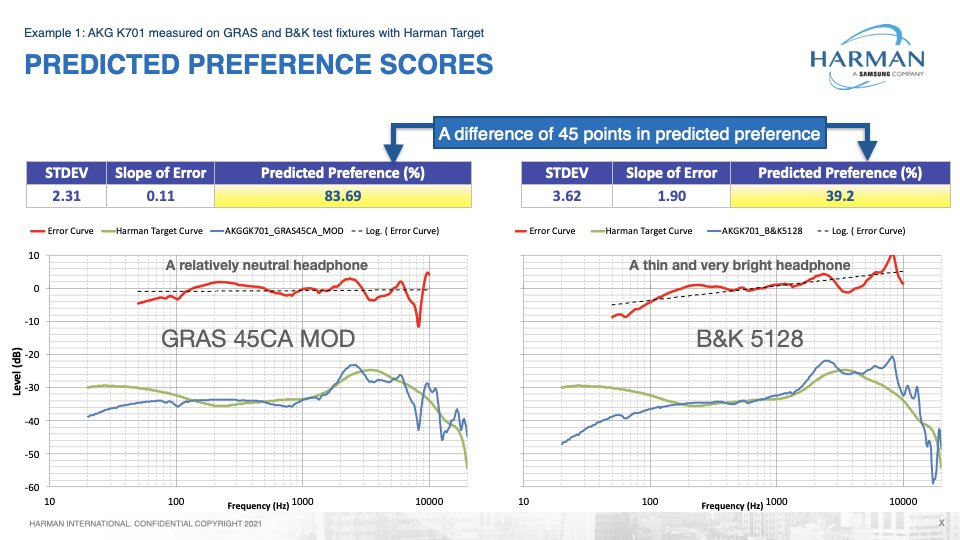- Joined
- Dec 1, 2017
- Messages
- 11
- Likes
- 52
I was simply pointing out my experience with the units I owned. It is exactly for the reasons you just pointed out that it is not possible to paint every K701, Austrian or not, as more bass light or the same bass level wise as every Q701 of course. I probably wasn't clear enough.Pad wear can make a big difference on headphones, for instance this is what Oratory measured on one of my K702's with old vs new pads on the same headphone, he said to imagine the red line measurement was inaccurate below around 60Hz and it instead would track the same difference to the green line without crossing it (a measurement error below 60Hz for the red line), so it's basically a 2dB Low Shelf from 1000Hz, so the older pads make it sound warmer (more bass) which would be similar for your AKG headphones you're talking about, so you'd have to take pad wear into consideration between the two headphones (and anyway Q701 and K701 are not the same headphone so not sure how you can compare bass levels in terms of concluding Chinese vs Austrian differences):
View attachment 158197
There also can be quite a lot of unit to unit variance between at least the K702 headphones, so that's another variable that could affect your Chinese vs Austrian AKG comparisons - ie make it less valid potentially, following is the frequency response of my two Chinese K702's with new pads:
View attachment 158198
So I think it's not easy for you to drill down to say it's a Chinese vs Austrian thing or even how the headphone specifications may or may not have changed through the years - there's too much variation due to pad wear & unit to unit variation to draw such fine conclusions in my view.
Incidentally, to this day I still have no idea what the exact difference is between K701 and K702 other than colorway and removable cable. Unit variation alone is enough to make graphs seem to skew one as brighter than the other and vice versa.

